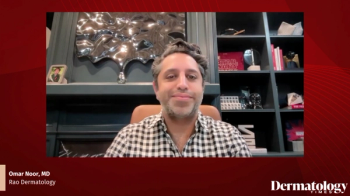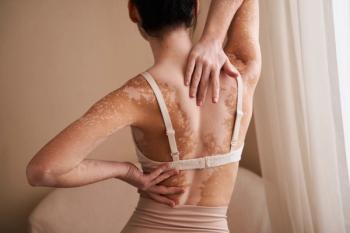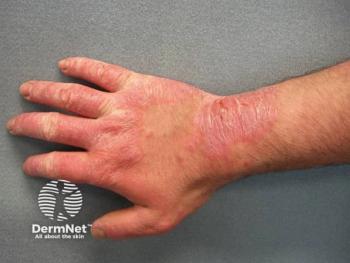
- Dermatology Times, August 2025 (Vol. 46. No. 08)
- Volume 46
- Issue 08
Key Opinion Leaders Share Top Clinical Insights for Physician Associates
Key Takeaways
- Streamlining prior authorizations can reduce treatment delays, with dedicated personnel improving workflow efficiency and patient communication enhancing adherence.
- Accurate diagnosis of chronic hand eczema requires comprehensive clinical history and differentiation from similar conditions using morphologic clues.
Clinicians at the SDPA Annual Summer Dermatology Conference explore innovative treatments, diagnostic strategies, and patient-centered care in dermatology.
Clinicians gathered in Washington, DC, for the
Streamlining Prior Authorizations to Reduce Barriers
Administrative burdens persist as an obstacle to timely dermatologic treatment. Janelle Ball, founder and CEO of BC Educators, addressed inefficiencies in the insurance authorization process and proposed operational solutions to support access to care.
“If you’re having multiple hands in the pot, it kind of slows the process down a lot,” she explained. “If you have a dedicated person [who] can help manage and streamline the workflow, it can really help make sure patients are able to get on medications a lot faster.”
Beyond internal workflows, Ball advocated for proactive patient communication and leveraging pharmaceutical support programs. She noted that providing patients with clear next steps during authorization delays improves adherence, reduces frustration, and improves satisfaction.
CHE: Diagnostic Accuracy Through Clinical Context
In a session on inflammatory dermatoses, Adam Friedman, MD, FAAD, emphasized the nuanced differentiation of chronic hand eczema (CHE) from clinically similar conditions such as psoriasis, atopic dermatitis, and allergic or irritant contact dermatitis. According to Friedman, misdiagnosis often stems from overlapping morphologies and symptomatology. A comprehensive clinical history is essential, including occupational exposures, hand hygiene practices, and known allergen contact. Morphologic clues such as lichenification may point more clearly to CHE vs others in the clinician’s differential diagnostic toolbox.
“The chronicity should also lend itself to having some lichenification [and] increased skin markings, and that could be a helpful clue because you will not see that when it comes to psoriasis,” Friedman said.
Color-Based Strategy for Lesion Triage
Orit Markowitz, MD, presented a streamlined framework for dermoscopy interpretation rooted in her “color wheel” approach. Designed to expedite lesion triage, this technique prioritizes evaluation of morphology, elevation, and color (both clinical and dermoscopic) before engaging in pattern-based analysis. For example, a blue hue might raise suspicion for deeper melanocytic processes, whereas white or pink tones could suggest regression or inflammation.
“If I need to, I’ll go into the weeds of patterns, but often I already know just based on those initial questions whether it’s something that needs to be left alone or removed,” she said. “The color wheel approach takes that into perspective, where we…think about not just what we see dermoscopically, but even what we see clinically.”
Tapering Strategies and T-Cell Memory in Vitiligo
Gina Mangin, MPAS, PA-C, presented clinical pearls for managing vitiligo beyond initial repigmentation. Although many treatment plans focus on pigment restoration, Mangin highlighted the challenge of relapse due to memory T-cell persistence. Abrupt discontinuation of therapy, even after successful repigmentation, often results in recurrence. She proposed a step-down approach involving weekend-only maintenance of topical calcineurin inhibitors or corticosteroids to suppress residual inflammation. This tapering protocol not only improves durability of response but also reinforces patient confidence in long-term disease control and management.
“The key is going to be maintaining some type of treatment, to not allow that relapse to happen and to not allow those memory T cells to wake up,” she said.
Trichoscopy as a First-Line Diagnostic Tool in Alopecia
Hair loss disorders frequently present diagnostic challenges due to overlapping clinical presentations and subtle histologic distinctions. Amy Spizuoco, DO, FAOCD, discussed the role of trichoscopy as an essential first-line tool in evaluating alopecia. By magnifying follicular patterns, hair shaft morphology, and perifollicular features, trichoscopy enables differentiation between scarring and nonscarring alopecia, often eliminating the need for biopsy.
“A lot of times, it prevents me from doing a biopsy and taking more time to get a diagnosis for my patients, and being less invasive, so it’s really helpful,” Spizuoco said.
JAK Inhibitors Expand Therapeutic Options in Hair Loss
David Cotter, MD, PhD, offered an in-depth review of alopecia areata pathophysiology and treatment algorithms, focusing on the JAK/STAT pathway as a therapeutic target. Cotter reviewed data on recently approved JAK inhibitors and noted expanding options for treatment-resistant phenotypes, including ophiasis and alopecia universalis. He also emphasized patient stratification, considering disease extent, psychological burden, comorbid autoimmune conditions, and treatment access, to optimize therapeutic outcomes.
“The ophiasis pattern, which is typically a bandlike distribution of alopecia that runs from the temporal scalp down to the occipital scalp,…is historically more difficult to treat,” Cotter said. “But with JAK inhibitors, it really does even out the playing field, and with these new medications, most people are able to get meaningful hair regrowth within a matter of time.”
Patch Testing in Nonresponsive Scarring Alopecia
Maria Hordinsky, MD, discussed an often-overlooked consideration in managing scarring alopecia: allergic contact dermatitis as a confounding variable. Patch testing may uncover sensitization to active agents or excipients for patients not responding to guideline-directed therapy, particularly those receiving frequent topical or intralesional medications. Hordinsky described clinical cases where removal of allergens improved treatment response. She also noted the growing research momentum in scarring alopecia but called for more standardized, multicenter clinical trials to strengthen evidence for emerging treatments and to define end points for remission and relapse.
“Sometimes the treatments that we prescribe or the injections that we do have chemicals in them your patient might be allergic to,” she explained. “It’s very important to recognize [that] if you’re doing everything you can [and] the patient’s not getting better, then it’s time to investigate with testing to figure out if there’s something the patient’s coming in contact with that’s driving this process.”
JAK Inhibitors Across Indications
Eileen Cheever, MPAS, PA-C, provided a high-level overview of the expanding footprint of JAK inhibitors in dermatology. She discussed FDA-approved agents such as ruxolitinib cream for atopic dermatitis and new data from clinical trials evaluating its use in prurigo nodularis, where itch reduction was observed as early as 1 week.
Cheever also reviewed data from the BRAVE-AA-PEDS trial (NCT05723198), which demonstrated the safety and efficacy of baricitinib in adolescents with severe alopecia areata. Although the drug’s therapeutic potential is promising, she cautioned clinicians to remain vigilant regarding long-term safety monitoring, particularly for immunosuppression, laboratory abnormalities, and thromboembolic risk.
Articles in this issue
3 months ago
Examining Bond-Building Hair Care Treatments4 months ago
Dermatology Times August 2025 Print RecapNewsletter
Like what you’re reading? Subscribe to Dermatology Times for weekly updates on therapies, innovations, and real-world practice tips.



















